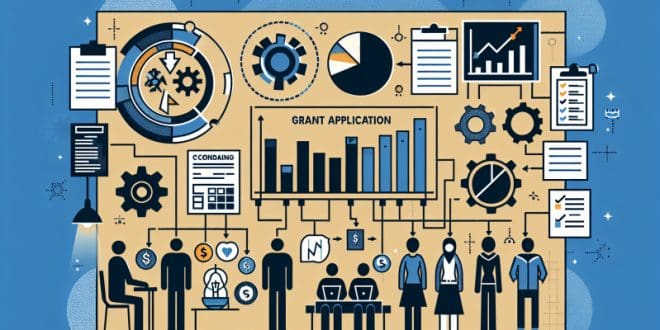In the ever-competitive landscape of nonprofit funding, a precise and analytical approach can substantially increase your odds of grant application success. The emergence of big data analytics has revolutionized various sectors, and the grants community is no exception. By embracing a data-driven strategy, nonprofit professionals can elevate their applications from mere requests for funding to compelling narratives that resonate with their potential funders’ goals and visions.
Understanding the Critical Factors:
The key to successful grant applications lies not just in articulating your nonprofit’s needs and mission but in demonstrating alignment with the grantor’s objectives. But how can one ensure such alignment? This is where data comes into play. A meticulous analysis of previously awarded grants, reporting outcomes, and funding patterns can reveal invaluable insights into what fundors prioritize.
1. Crafting Compelling Narratives:**
Data tells stories, and in the world of grant applications, these stories can set you apart. By analyzing your organization’s data—ranging from impact statistics to constituent testimonials—you can construct a narrative that not only demonstrates effectiveness but also humanizes your mission. This data-driven storytelling can strike a chord with potential funders, showcasing the tangible difference your organization makes.
2. Identifying Alignment with Funders:**
Delve into the wealth of available data on funders’ past giving trends to identify those whose priorities align with your projects. By using data analytics to dissect RFPs (Requests for Proposals) and grant announcements, you can better understand the language and metrics that resonate with them, thereby tailoring your application to reflect their funding ethos.
3. Understanding Past Funding Patterns:**
A historical analysis of funding patterns can help predict future opportunities. Look at the types of projects funded, the geographical areas, amounts awarded, and the success metrics used by funders. Leverage this information to assess where your proposal might fit within a funder’s portfolio.
Improving Data Collection and Utilization Practices:
It is imperative for nonprofits to critically assess their data collection methods. Quality data collection is a cornerstone of a solid data-driven approach. Conduct surveys, implement tracking systems, and ensure you’re capturing the right kind of data that could support your applications.
Data Literacy in the Nonprofit Space:
Nonprofit professionals must not only gather data but also become adept at interpreting it. Data literacy is becoming increasingly essential, as it allows for better decision-making and more persuasive grant applications. Invest time in training your team or seeking expertise to make sense of the data you collect.
Ethical and Effective Data Management:
Managing data comes with the responsibility of maintaining privacy and integrity. Nonprofits must establish data management policies that protect sensitive information, comply with regulations, and respect the confidentiality of their donors and beneficiaries.
In conclusion, the integration of big data analytics into the grant application process is not just beneficial—it’s becoming essential. By harnessing the power of data, nonprofit professionals can tailor their proposals to mirror funders’ expectations more closely, thereby increasing their chances of success.
As you embark on this data-driven journey, consider the following questions to challenge your nonprofit’s approach:
– How can we improve our data collection to better support our grant applications?
– In what ways can we ensure our data analysis aligns with our mission and values?
– What policies do we have in place to protect the privacy and integrity of our data?
The grants community is ripe for a revolution, and data is the catalyst. It’s time to decode the success code and give your nonprofit the edge it deserves in the competitive realm of grant funding.
 Grants Club Community
Grants Club Community







